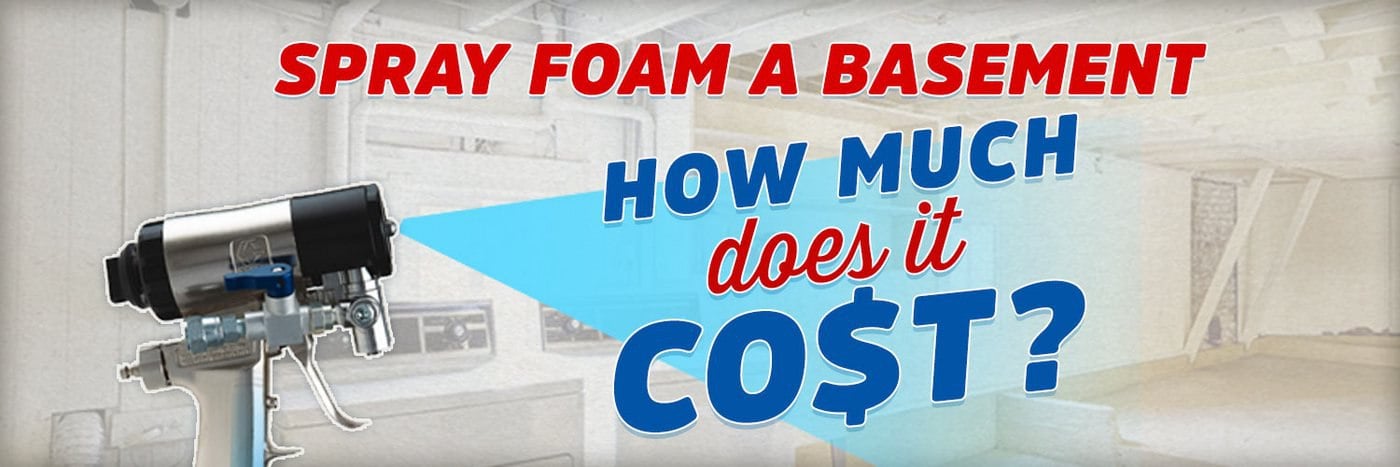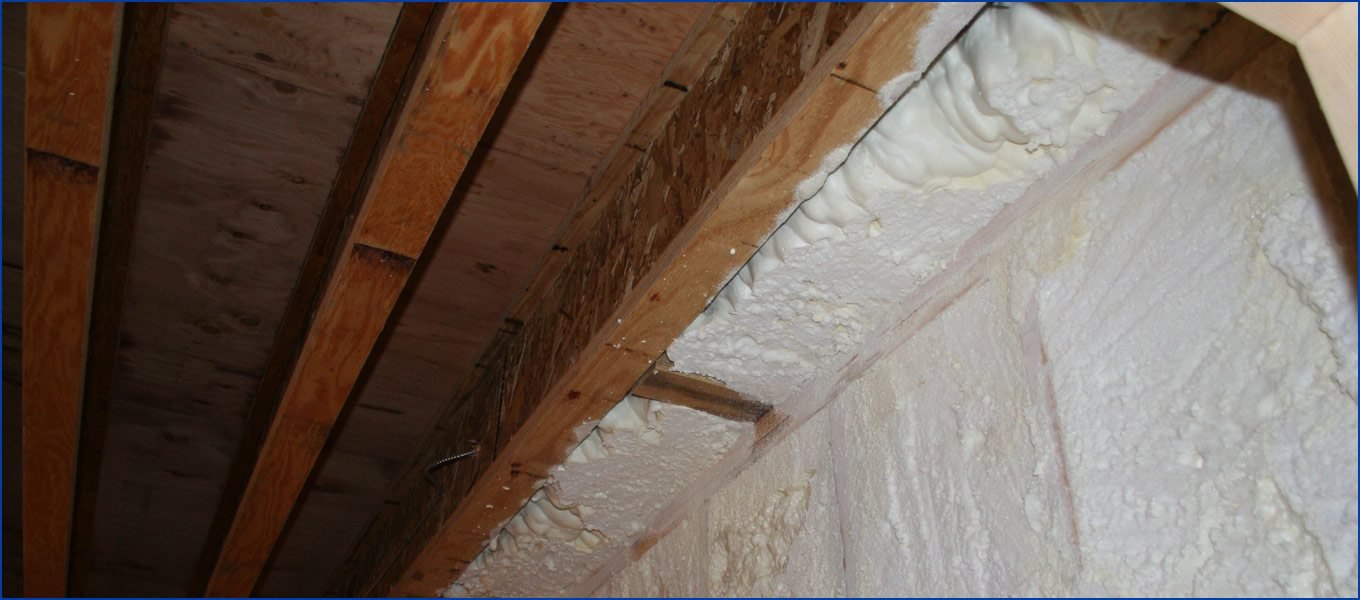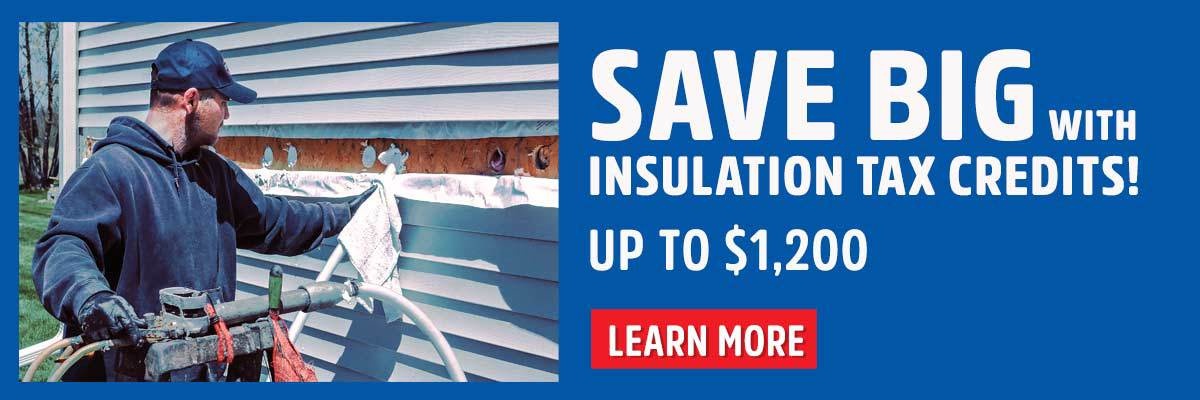How Much Does it Cost to Spray Foam a Basement in 2026?


As you plan out finishing your basement, you also need to think about the cost of spray foam insulation to make it a comfortable space.
Insulating your basement involves three areas: the basement walls, the basement ceiling, and the rim joist. Whether you’re transforming your basement into a rec room or an extra bedroom, creating an air seal will make the space more comfortable and quieter while saving you money on monthly energy bills.
RetroFoam of Michigan has more than 20 years of experience insulating homes across the Lower Peninsula and the greater Toledo area with spray and injection foam insulation. We know using spray foam insulation is the best way to create the air seal you need for your basement.
We want to educate every homeowner as much as possible, so in this article, we'll talk about the cost but also the factors that go into it.
Key Points:
• Average Cost Range: Most homeowners can expect to pay $4,500 to $9,200 to insulate the basement walls, ceiling, and rim joists with spray foam.
• What's included: This estimate covers all three major areas -- walls, ceiling, and rim joist -- but does not include any rebates or discounts you may qualify for.
• Biggest Cost Factors:
• Size and layout of the basement.
• Open cell vs. closed cell spray foam.
• Local climate considerations, especially Michigan's moisture and cold winters
• Foam Type Matters:
• Open cell allows moisture issues to be discovered rather than hidden and provides better sound dampening.
• Closed cell is a vapor barrier but can conceal water problems if they already exist.
• Application Thickness: Open cell creates an air seal at 3 inches, while closed cell does so at 2 inches.
• InstallationTimeline: Most full-basement jobs take 4 to 6 hours, including prep, spraying, trimming, and cleanup.
• Installation Process:
• Open cavities are sprayed; enclosed walls require injection foam.
• Studs should be furred out slightly to prevent thermal bridging.
• Excess foam is trimmed so walls can be finished smoothly.
• Contractor Services to Expect:
• Free consultation
• Concierge-style project guidance
• Removal of old insulation
• Cleanup before and after installation
• Rebate paperwork handled for you
• Lifetime transferable warranty
• Saving Opportunities: Michigan homeowners may qualify for rebates from utility companies for energy-efficient upgrades.
How Much Does it Cost to Insulate a Basement with Spray Foam?
The average cost to insulate a basement with spray foam insulation can run anywhere between $4,500 and $9,200.
This rough estimate includes the walls, ceiling, and rim joist, but doesn’t include any discounts or rebates you may be eligible for.
Factors that Impact Spray Foam Insulation Costs
Several factors influence the cost of insulating your basement with spray foam in Michigan.
The size and layout of your basement are crucial, as larger areas require more materials and labor. Additionally, the type of spray foam you choose -- closed cell or open cell -- significantly affects the price.
Local weather conditions, especially Michigan's harsh winters, may also impact your insulation needs.
Open Cell vs. Closed Cell Spray Foam Insulation for the Basement
Many contractors will say to use open cell spray foam above grade and closed cell spray foam below grade, which means above and below the ground level.
The reason for this recommendation is that some contractors believe that because closed cell spray foam is an absolute vapor barrier, it doesn’t let moisture move through it, and is resistant to bulk water. This is true, but it can also hide these leaks, which can cause other issues, including structural damage and mold.
In Michigan’s climate zone, we can be more prone to moisture issues, and that’s why contractors will suggest closed cell spray foam. An experienced contractor won’t recommend closed cell spray foam to fix any moisture problems in the basement. It’s better to address that problem than put a layer of closed cell foam on top of it in hopes of fixing it.
Both closed and open cell foam will provide the needed air seal at an application of 2 inches and 3 inches, respectively.
Most homeowners are unaware that open cell spray foam insulation won’t absorb and retain water, so if the basement leaks, it will show the homeowner where the leak is, so it can be fixed before causing further damage. Because of this and open cell foam’s superior sound-dampening abilities, more and more homeowners choose open cell spray foam to insulate their basements.
What is the Process for Installing Foam Insulation in a Basement?

Insulating the entire basement – walls, rim joist, and ceiling usually takes about four to six hours.
The installation involves spraying the walls' open cavity, rim joist, and ceiling. If the drywall is already up, then injection foam would be used in the wall cavity. Injection foam can also be used if you plan to leave concrete block walls exposed.
A good contractor will suggest that the basement wall studs are furred out about a quarter of an inch to a half-inch. This is recommended so that when the concrete walls are sprayed, the foam can get behind the stud to prevent any thermal bridging.
Thermal bridging, also called a cold bridge or heat bridge, is an area of a building with a significantly higher heat transfer than the surrounding materials, resulting in an overall reduction in the building's thermal insulation.
Thermal bridging is most commonly found on the studs of exterior walls, attics, and roof structures.
Much like the process of insulating a rim joist, items in the basement need to be moved away from the walls and covered.
If there is any old insulation in the basement ceiling or rim joist, a crew will come to your home to remove that old insulation so that the spray foam can do its job.
On the day of the installation, the crew will run a hose into the basement that they will use to spray the foam onto the ceiling, rim joist, and exposed walls. Once the foam is sprayed, if there is any excess in the wall cavity, it will be cut so the drywall or paneling can be placed with no problem.
If the walls are already enclosed, the process is similar, except that holes will be drilled into the drywall so the foam can be injected into the cavity. Once the foam is installed, a crew member will put a Styrofoam plug into the drilled holes, tape it, and then place a rough patch of drywall mud over it.
For a basement with concrete block walls, holes will be drilled in the middle of the wall into the cavities left open by lining up the cores. Those cores are then filled with foam, preventing air movement.
What Services Should Be Included with Professional Basement Insulation?
A good insulation contractor should offer several services that start with your call for a free in-home consultation and end with a more comfortable basement.
Some of the services that should be offered include:
- A free, no-hassle consultation for your project.
- Free concierge program that gives you a person you work with from the beginning to the end of the project to answer any and all questions you might have.
- Help with applying for financing for the project.
- Cleanup preparation for the insulation job, including removing old insulation.
- Cleanup once the job is complete so your home looks like it did before we arrived.
- Rebates filed with your energy provider.
- Offer a lifetime warranty that is connected to the house and is transferable.
Unlock Savings: Home Insulation Rebates and Tax Credits in Michigan
When it comes to insulating your home in Michigan, there's more than just warmth and comfort to gain – you can secure substantial savings through rebates and tax credits.
Rebates vs. Tax Credits: What's the Difference?
Before we dive into the specifics, it's essential to understand the distinction between rebates and tax credits.
Rebates are like cash rewards for achieving specific energy efficiency goals in your home. Utility providers such as Consumers Energy, DTE, SEMCO, and Michigan Gas and Utilities typically offer them.
On the other hand, tax credits help offset your tax liability and are granted when you make energy-efficient improvements to your home.
Rebates Galore for Michigan Homeowners
Michigan homeowners have a variety of rebates at their disposal.
If you're insulating a single area of your home, you can snag rebates ranging from $50 to $250, depending on the scope of your project. These rebates are provided directly by your utility provider.
But if you're thinking about insulating at least two areas of your home, the home performance rebate might be your go-to option. It's designed to enhance your overall home's energy efficiency and offers rebates ranging from $400 to $1,100.
Tax Credits: A Golden Opportunity
For those who crave substantial savings, there's the Inflation Reduction Act.
This policy allows homeowners to claim up to $1,200 in credits annually for individual insulation or other energy-efficient upgrades until December 31, 2025.
To claim these tax credits, you'll need to complete IRS Form 5695 and provide a copy of your contract with RetroFoam of Michigan.
The Eligibility Puzzle
It's crucial to note that eligibility for these rebates and tax credits requires some consultation.
You'll want to contact your energy provider and perhaps a tax professional to ensure your work qualifies.
With the cost of foam insulation for homes in 2026, these rebates and tax credits can significantly offset your expenses, making the financial benefits of this decision even more compelling.
Other Ways to Conquer High Energy Bills, Cold Floors, and Drafts
A cold and uncomfortable basement and a rim joist letting air into your home can contribute to high monthly energy bills, but they aren’t the only culprits.
Heat loss in your home could also be due to little or no insulation in your attic.
Cold walls, drafts, and high energy bills are also signs you need new or better insulation in your exterior walls.
Insulating your entire home with foam insulation can make a year-round difference in your comfort and energy bills. You will be warm in the winter and cool in the summer without paying a fortune.
Getting Started with a Free Consultation
Are you ready to experience the benefits of foam insulation in your basement?
If you’d like to learn even more about the benefits of foam insulation in your home, check out the Learning Center on our website.
When you’re ready to schedule a free in-home consultation, give us a call at 866-900-3626 or fill out the form on our website.
Related Articles
What is the Best Way to Insulate Concrete Block Walls in Homes?
Can You Use Spray Foam to Stop Basement and Foundation Leaks?
Does Spray Foam Insulation Absorb Water?
 Frequently Asked Questions: Spray Foam Insulation for Basements
Frequently Asked Questions: Spray Foam Insulation for Basements
How much does it cost to insulate a basement with spray foam?
Most basements fall between $4,500 and $9,200, depending on the square footage, foam type, and how many areas need to be insulated.
Is spray foam really worth it in a basement?
Yes, spray foam creates an air seal that keeps the space more comfortable, reduces noise, and can help lower heating and cooling costs.
It also prevents the cold-floor feeling common in unfinished or poorly insulated basements.
Should I choose open cell or closed cell foam for my basement?
Open cell is becoming more popular in Michigan basements because it won't trap moisture, shows leaks, and provides excellent sound dampening.
Closed cell is a vapor barrier, but it can hide moisture issues that need to be addressed. Both can create an effective air seal when installed at the proper thickness.
How long does the installation take?
A standard basement project usually takes 4 to 6 hours from start to finish, including prep work and cleanup.
Can spray foam be installed if my basement walls are already finished?
Yes, the crew uses injection foam, which is installed by drilling small holes into the drywall.
After the foam is injected, the holes are plugged, and a rough patch of drywall mud is applied.
What happens if my basement has concrete block walls?
Holes are drilled into the cores of the block so foam can be injected.
This fills the voids and stops unwanted air movement through the blocks.
Do I need to remove old insulation before installing spray foam?
Yes. Any old fiberglass or other materials should be removed so the spray foam can properly adhere and perform as intended.
Many contractors include this service.
Will spray foam help with noise control?
Open cell foam provides excellent sound dampening, which can help make rec rooms, home gyms, or basement bedrooms quieter and more comfortable.
Can spray foam hide water problems?
Closed cell foam can mask leaks because it doesn't absorb water and doesn't allow water to move through it.
Open cell, on the other hand, does not retain water, but it does allow water to move through it, so any moisture issues remain visible.
For either type of spray foam, moisture problems should always be fixed before insulation is installed.
About Amanda Emery
Amanda previously has worked as a breaking news and crime reporter, TV news producer, and editor in Flint and Detroit. Throughout her career as a journalist, she has won several awards from The Society of Professional Journalists - Detroit Chapter and the Michigan Press Association. As part of the RetroFoam of Michigan family, Amanda uses her experience as a journalist to write content that will help educate homeowners on the benefits of foam insulation. When Amanda isn’t writing, she’s spending time with her husband and rescued huskies. She also loves knitting, making art, cooking, and hosting dinner and a movie night for friends and family.



